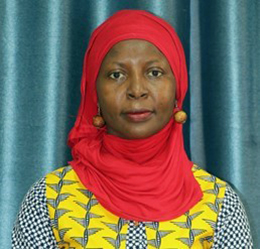
The South African Research Chairs Initiative (SARChI) hosted an informative research webinar. Dr Madina Guloba, a development economist and Senior Research Fellow at the Economic Policy Research Centre (EPRC), Uganda, presented a paper on the precarious non-poor in Africa: the Uganda Case study.

Dr Madina Guloba
Guloba’s paper, in collaboration with Dr Ibrahim Kasirye, attempts to understand Uganda’s population and the precarious non-poor. They explore the dynamics that result in changing from being precariously non-poor to becoming poor and its implications for sustainable planning. Compared to other African and specifically sub-Saharan African countries, Uganda’s Gross Domestic Product (GDP) growth has been positive since 2010. However, during the pandemic, it declined. There has been progress in poverty reduction in Uganda. However, it has not been evident in the performance of other Sustainable Development Goals (SDG) indicators, particularly regarding health, education and access to sanitation. The leading cause has been because of the population growth in Uganda. In addition, Uganda has proven to sustain high fertility rates.
Within Uganda’s middle-class society, at least 11 million people from the middle class are said to be in the floating class. This suggests that they are precariously non-poor. They are highly vulnerable to economic shock and can easily descend into poverty. If the nation’s poverty line is doubled, at least 61% of Ugandans will become poor. About 42.1% of Ugandans are multidimensionally poor (approximately 17.2 million). Ugandans’ poverty intensity is estimated at 54.7% (approximately 9.4 million people). Four dimensions are considered to measure the Multidimensional Poverty Index. These are education, health, living standards, and employment or empowerment. The indicators contributing most to multidimensional poverty in Uganda are sanitation, housing materials and electricity.
In her conclusion, Guloba mentioned that poverty is higher in rural areas, but that shocks may change these dynamics. Income poverty at a national level does not have a significant gender dimension. Ugandans are currently income poor when compared to the international poverty lines. Investing in human capital development is necessary to reduce the precariousness of being poor. The research also reveals that people with higher education levels are less susceptible to poverty. Therefore, there is a need to invest in education. The so-called middle class in Uganda is essentially precariously poor. It is, therefore, critical to investigate poverty through a multidimensional lens.
* By Hanli Wolhuter, Communication and Marketing Specialist & Musa Buthelezi, Intern, College of Graduate Studies
Publish date: 2022-11-08 00:00:00.0